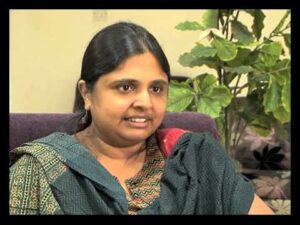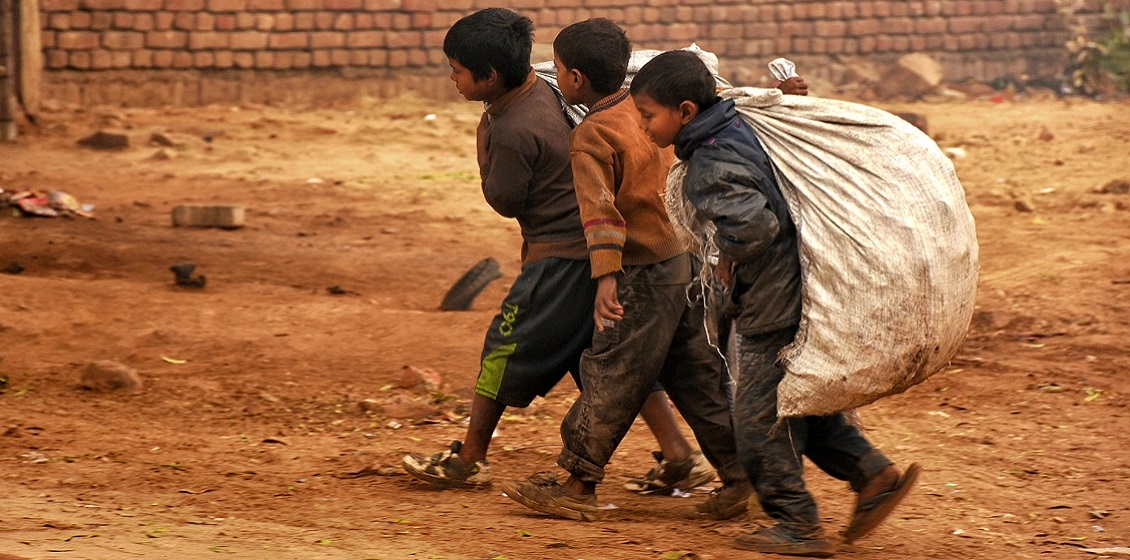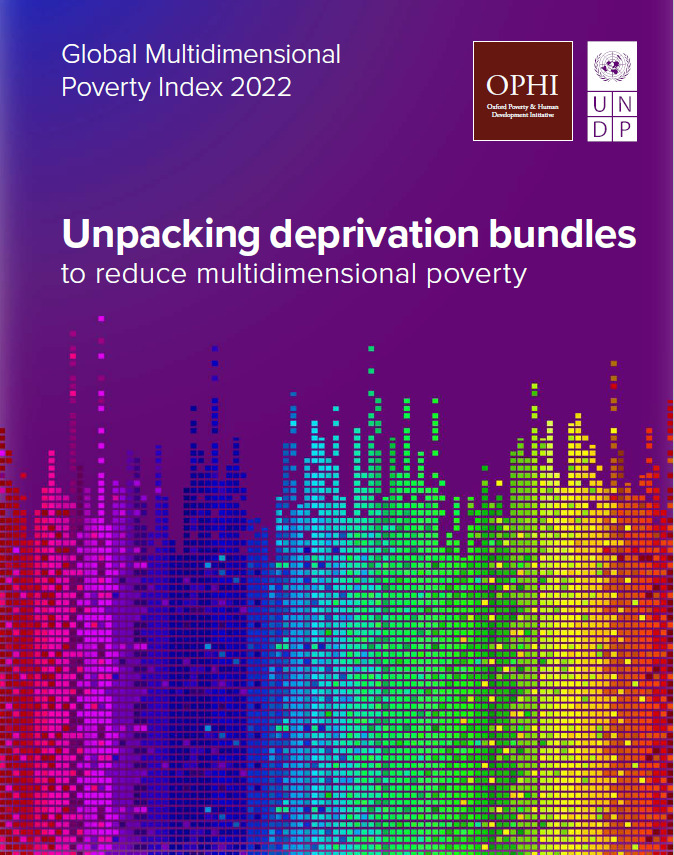The Global Multidimensional Poverty Index (MPI) is a yearly publication by the UN that measures worldwide poverty levels. This year, a new way to address poverty was introduced. For the first time, it uses a concept called ‘poverty in bundles’, or a combination of deprivations a person suffers, to assess the precise nature of poverty across regions. The idea is to tackle the problem through a targeted approach.
To understand the concept of ‘poverty in bundles’, it is important to acknowledge the MPI, an index launched in 2010 by the Oxford Poverty and Human Development Initiative at the University of Oxford and the United Nations Development Programme (UNDP). It was a step towards achieving the UN’s SDG 1 to end poverty everywhere in all its forms.
The MPI measures deprivation for each household by monitoring ten indicators spanning across three broad categories — health, education and standard of living. Within each of these dimensions there are indicators of deprivations. In the dimension of health are nutrition and child mortality, within education, years of schooling and attendance, and within the standard of living there are six indicators — cooking fuel, sanitation, drinking water, electricity, housing and assets. Each of these indicators is given equal weightage within each broad category while calculating the overall MPI.
For the first time, the UN report looks into the interlinkages among the ten indicators of the MPI. It investigates the overlap in deprivation indicators in pairs, triplets, or bundles. For example, the report found that 80 percent of poor people who are deprived of drinking water also experience deprivations in sanitation, this is an interlinked pair. Again, almost half of the poor people, 470.1 million, are deprived of both nutrition and sanitation worldwide, a pair that makes them more vulnerable to infectious diseases.
The findings of the 2022 report state that across 111 countries, 1.2 billion people, or 19.1 percent, live in acute multidimensional poverty. This compares to 1.3 billion people, 21.7 percent, across 109 countries in 2021. The largest number of poor people live in Sub-Saharan Africa, nearly 579 million, followed by South Asia with 385 million people.
MPI is being increasingly seen as a more rigorous measure of poverty than income. In recent research, called the Relationship Between Income Poverty and Multidimensional Poverty in China, Xiaolin Wang and others found that the coincidence of income poverty and multidimensional poverty is 31 percent. In other words, 69 percent of multidimensionally poor households are not considered poor in terms of income poverty in China. While an increase in income can significantly reduce multidimensional poverty, its impact is therefore limited.
The interlinkages in the MPI can identify patterns of poverty across different regions of the world
For example, the UN report says that a poor person in South Asia is more likely to be deprived of nutrition, cooking fuel, sanitation and housing, while a poor person in Sub-Saharan Africa is more likely to have those deprivations, along with drinking water and electricity.
In complying with the SDG, the multi sectoral policies, formulated on the basis of interlinkages, can not only lift millions out of poverty, but also minimize poor people’s burden by enabling them to overcome multiple deprivations at the same time, says the UN report. The study finds that there are 120 possible deprivation triplets, and the diversity of deprivation patterns is striking.
The UN report has a special mention of India, where 415 million people experienced poverty between 2005-2006 and 2019-2021. Rural areas, also the poorest, saw the fastest reduction in MPI value. The incidence of poverty fell from 36.6 percent in 2015-2016 to 21.2 percent in 2019-2021 and from 9.0 percent to 5.5 percent in urban areas.
Limitations of the MPI
However, measuring poverty solely on the basis of MPI has its own limitations. Most importantly, it ignores the purchasing power of people. For example, in the case of India, where the income per capita is much lower than in other parts of the world, the MPI ignores the stagnating income levels. According to data by the UN’s International Monetary Fund (IMF), India’s per capita income in 2021 was one of the lowest in the world at $2,191, which puts it in the 144th position out of 194 economies.
“I think that the figures on household amenities are plausible and that most of these facilities are actually being utilized, with the partial exception of toilets. None of the deprivations included in the multidimensional poverty index capture short-term purchasing power. It is important to bear that in mind, especially when we are looking at episodes like the last few years in India, when many people’s purchasing power has been eroded” says Jean Dreze, Visiting Professor at Ranchi University, India, in an email to DDRN.
“There is no contradiction. Poverty in India is declining, but India is still one of the poorest countries in the world. In some aspects of poverty, like nutrition, progress has been very slow, so that India’s position vis-à-vis other countries has deteriorated”, adds Dreze. The underlying data for India used in the report are based on what is known as “the censored headcount ratio” or HCR. The censored data integrate the deprivation in one dimension, e.g. nutrition, with all other dimensions e.g. fuel, sanitation, etc.
Therefore, a person might not be able to afford two square meals, but his deprivation will decline if he has other amenities like toilets and electricity. The uncensored HCR captures what can be said as undiluted deprivation in each category. Further, a look into the MPI data shows per capita consumption declined from 3.8% to 3% between 2005-15 and 2015-21, the latter being the Modi era.
“Also, when uncensored data are taken into consideration, the level of poverty decline is much lower than that in the case of censored data”, points out Drèze. For example, the decline in the deprivation rate of average ‘living standard,’ comes at 14% in the case of censored data, but only 8% in the case of uncensored ones. INTERACTIVE CHART
Earlier, every five years, the government published a survey of consumption expenditure, a repository of data on the purchasing power of the rural and urban populations. In 2017-18, the government scrapped its own consumption expenditure survey stating quality issues—a precedence not seen before. The leaked report, published in the media, had some disturbing facts— the average monthly spending of an Indian fell by 3.7% between 2011-12 and 2017-18. It declined by 8.8%t in villages.
“The notable decline in poverty in India does not match with ground reports”, said Dipa Sinha, Assistant Professor of Economics at Ambedkar University, India, in a zoom interview with DDRN. India still must go a long way in terms of eradicating hunger. It ranks 107th among 121 nations in terms of hunger—a ‘serious’ concern, according to the Global Hunger Index. INTERACTIVE CHART
“The findings are true, but when we look at the ground reports, there is a mismatch. We have seen many more toilets and gas cylinders in Indian households than before. What is missing from the data are effects, like nutritional or learning outcomes, as well as aspects like purchasing power and access to resources”, says Sinha. One of the limitations that the UN report notes is the lack of availability of harmonized data. It says that the irregularity of multitopic household surveys hinders the power and potential of the global MPI.
The report states, that “it is time to emphatically raise alarm on missing data on measuring poverty”. While the MPI comes with its own limitations, the interlinkages among different dimensions of deprivation that the UN report highlights offer new forms of solutions toward targeted poverty alleviation schemes. At the same time, a robust database can add multifold efficiency. Depending solely on MPI, while ignoring other measures of development, like the Purchasing Power Parity (PPP), which measures the purchasing power of the people at a given time, might be an instance of self-denial.
Namrata Acharya is a journalist with bylines in Al Jazeera, South China Morning Post Zenger News, Mongabay, The Wire, The Juggernaut, KR- Asia and more.






